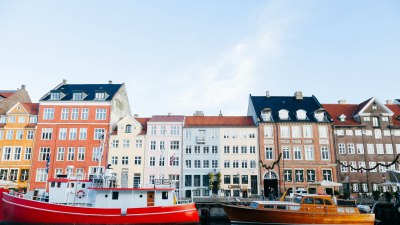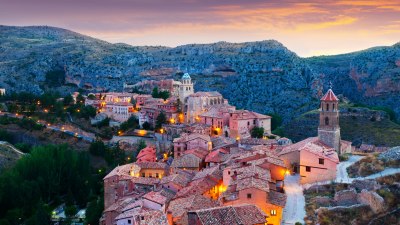Why This City Has More Canals Than Venice
Explore the unique canal system of a city that surpasses Venice in number and beauty.

When we think of cities famous for their extensive canal systems, Venice is often the first one that comes to mind. The romantic gondolas and picturesque waterways of the Italian city have enchanted visitors for centuries. However, there exists a city that boasts a staggering number of canals that far exceed those of Venice. This lesser-known destination is Amsterdam, the capital of the Netherlands. While it may not hold the same iconic status, Amsterdam’s canals are just as captivating and have a rich history that is worth exploring.
Amsterdam is home to more than 165 canals, which span over 100 kilometers in total length. This is an impressive feat when considering that Venice has around 150 canals, covering a much smaller area. The unique geography and historical development of Amsterdam have contributed to its extensive canal system, which dates back to the 17th century.
The Historical Background of Amsterdam’s Canals
The origins of Amsterdam's canals can be traced back to the city’s expansion during the Dutch Golden Age in the 17th century. As the population grew, it became necessary to build a robust infrastructure to support the burgeoning trade and commerce that characterized this period. The city planners devised a clever scheme that involved creating a series of concentric canals—known as the Grachtengordel—to regulate water levels and provide an efficient transportation route for goods.
The Grachtengordel consists of three main canals: the Herengracht, Prinsengracht, and Keizersgracht. These canals were built in a semi-circular pattern, which allowed for the development of spacious canal houses that still stand today. The careful planning of these waterways reflects the city’s commitment to maximizing utility while creating a visually stunning environment.
Canal System Design
What sets Amsterdam apart from Venice is the systematic design and engineering of its canal system. While Venice is known for its labyrinthine waterways, Amsterdam features a more organized grid that facilitates navigation and accessibility. The canals are interlinked, allowing for easy passage from one area to another, which is particularly beneficial for both residents and visitors alike.
Moreover, Amsterdam’s canals are shallow and designed to serve specific functions, including drainage and flood control. This practical approach to canal construction demonstrates a forward-thinking mentality that prioritized sustainability and resilience. The canals were not only used for transportation but also played a crucial role in keeping the city dry.
The Cultural Significance of the Canals
The canals of Amsterdam are not only vital from a functional perspective; they also embody the city’s cultural identity. The waterways contribute to the unique ambiance that attracts millions of tourists every year. The iconic canal houses, with their distinct architecture, provide a quintessential backdrop that defines the cityscape.
Additionally, the canals have become an essential part of local traditions and festivities. Events like the Amsterdam Canal Parade, which is part of the city's annual Pride celebrations, showcase the vibrant culture and diversity that Amsterdam embodies. The canals serve as a platform for social interaction and community bonding, where residents come together to celebrate various events throughout the year.
Environmental Considerations
Additionally, the city has implemented numerous sustainability initiatives aimed at protecting and restoring its water systems. These efforts include promoting alternative forms of transportation, such as cycling and walking along the canals, thereby reducing carbon emissions and vehicle traffic within the city. The canals serve as a reminder of the importance of caring for our natural resources, and Amsterdam is at the forefront of promoting responsible urban planning.
An Urban Experience Like No Other
Visiting Amsterdam’s canals provides a unique urban experience that is unparalleled. The lack of cars along the canals enhances the city’s serene atmosphere, allowing visitors to enjoy leisurely strolls or canal cruises without the noise and congestion typical in many urban environments. The option to rent a boat and explore the canals at one’s own pace adds to the allure of this destination.
The picturesque bridges, vibrant houseboats, and charming cafés lining the waterways create an inviting environment that encourages exploration and relaxation. For those who appreciate art and history, the many museums and galleries situated along the canals offer an enriching experience, making Amsterdam a city that caters to a variety of interests.
Venice vs. Amsterdam: A Comparative Analysis
While both Venice and Amsterdam are celebrated for their canals, the two cities provide distinct experiences shaped by their respective histories and cultures. Venice, with its intricate network of narrow waterways and historical architecture, exudes a sense of timeless romance. In contrast, Amsterdam showcases a modern, vibrant atmosphere that highlights its innovative spirit and adaptable urban planning.
In terms of upkeep, Amsterdam is often praised for its ongoing maintenance and preservation efforts, ensuring that its canals remain clean and navigable. This commitment to sustainability has allowed the city to maintain its charm while accommodating modern needs, making it a more livable urban center compared to Venice, which faces challenges related to rising sea levels and tourism impacts.
A City of Canals and Culture
In conclusion, while Venice may hold the title of the most iconic canal city, Amsterdam truly surpasses it in the sheer number of canals and the unique experiences they offer. The combination of historical significance, cultural richness, and environmental consciousness makes Amsterdam’s canals an essential part of the city’s identity. As cities around the world continue to grapple with urbanization and climate change, Amsterdam serves as a shining example of smart urban design that respects both history and the environment. Whether you’re exploring the canals by foot, bike, or boat, there is no shortage of beauty and intrigue in this city of canals.











